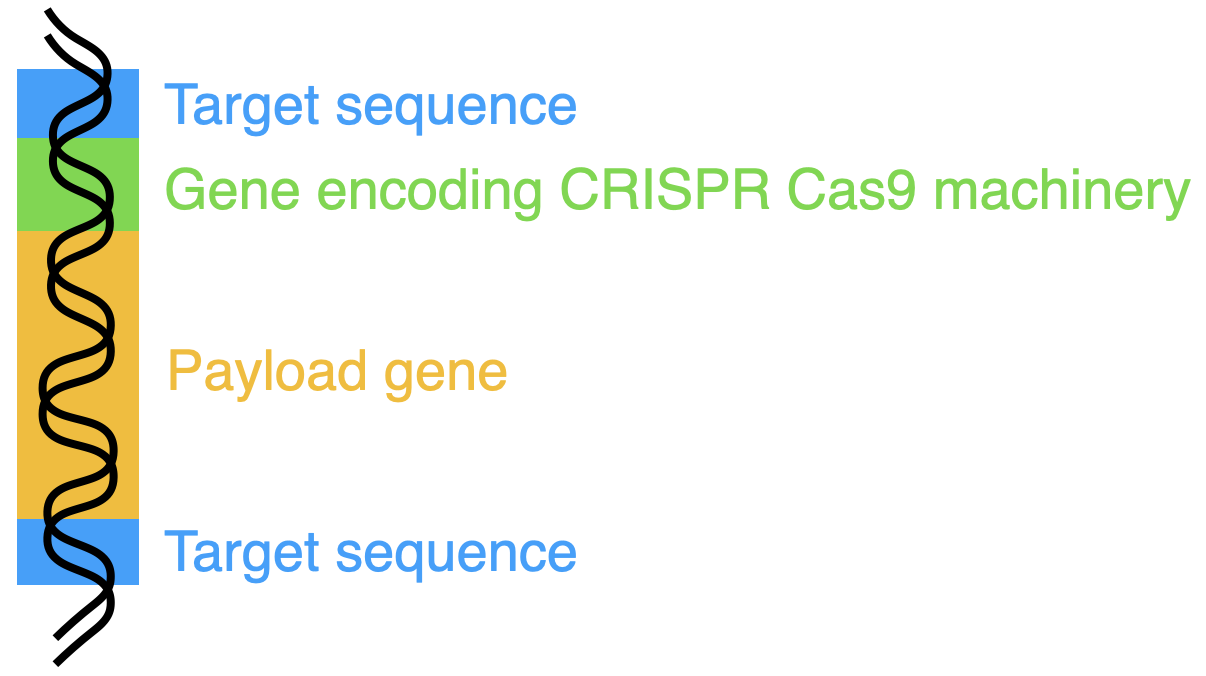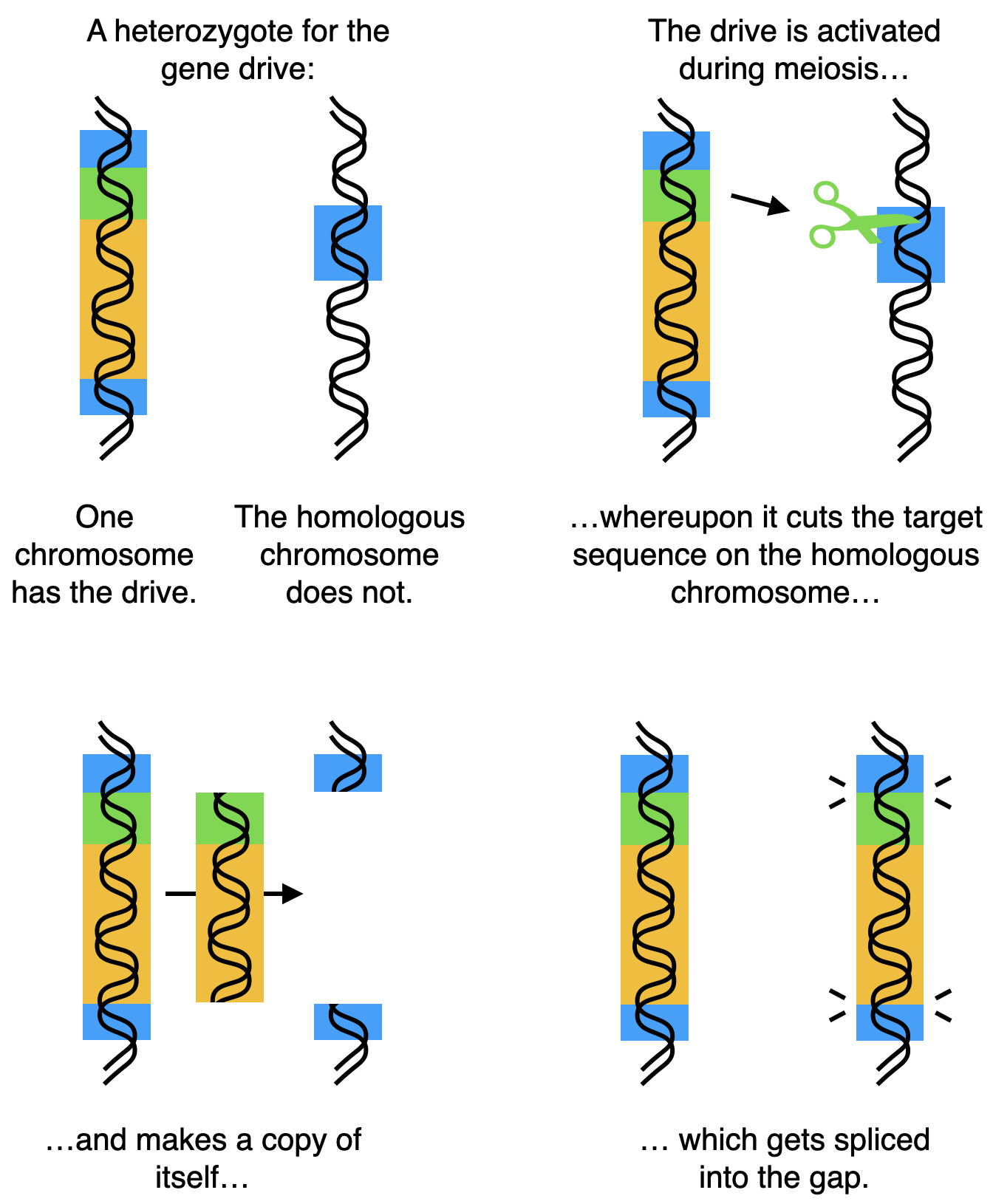9.2 A gene drive
A gene drive is an artificial gene that cheats to subvert Mendel’s rules. The drive employed by Kyrou and colleagues encodes the machinery for CRISPR-Cas9 genome editing along with a payload gene that need not much concern us here:

The drive is inserted in the middle of a particular DNA sequence that typically occurs in just one gene. During the production of gametes, the gene drive inserts a copy of itself into any instance the target sequence that does not already contain the drive.

This drastically alters the outcome of gamete production in heterozygotes for the gene drive—that is, in individuals that have one chromosome carrying the drive and one chromosome not carrying the drive. Because the drive copies itself into any chromosome that doesn’t already carry it, all of the gametes produced by a heterozygote carry the gene drive—not the 50% we would typically expect.
Imagine a heterozygote for the gene drive. We can represent its genotype as D +, where D represents the gene drive and + represents the normal target sequence lacking the drive. When this individual mates with a homozygote that lacks the drive, all the offspring are carriers of the drive:

In other words, a gene drive subverts the rules of Mendelian inheritance. It cheats—by replacing every copy of the other allele with a copy of itself.